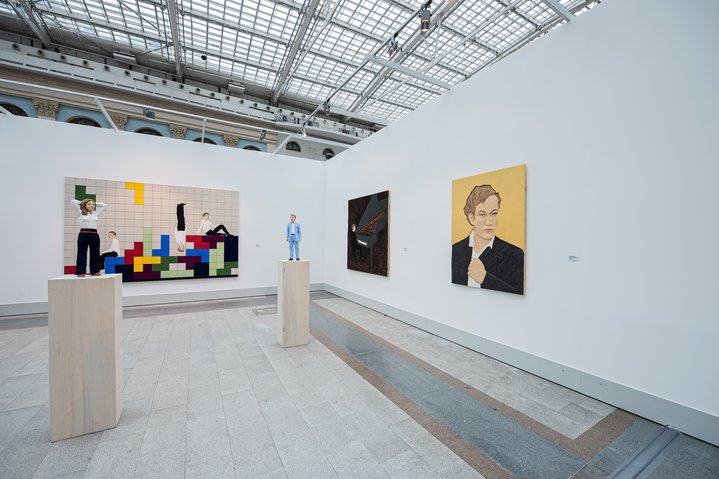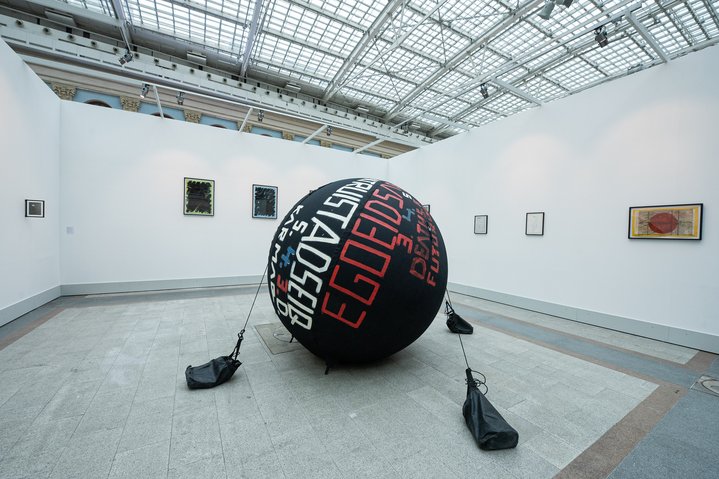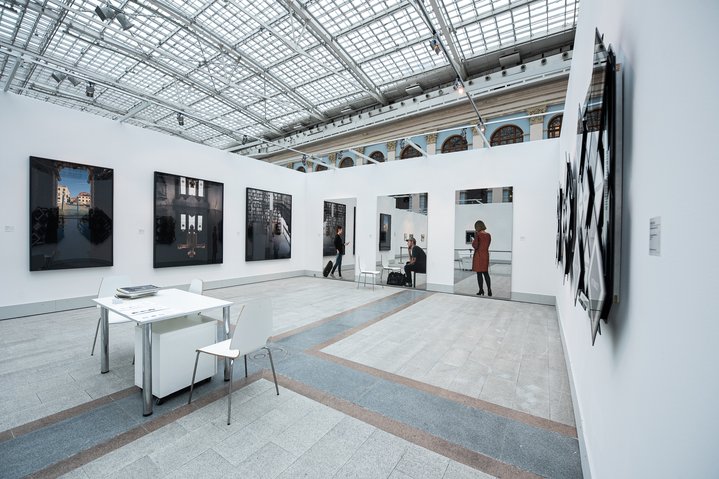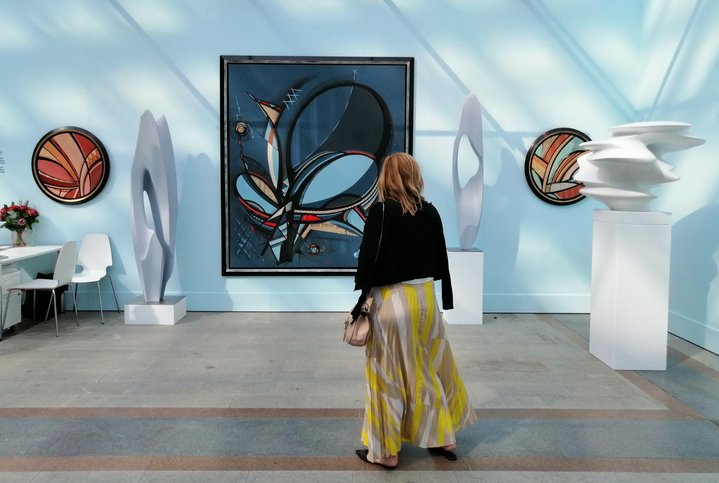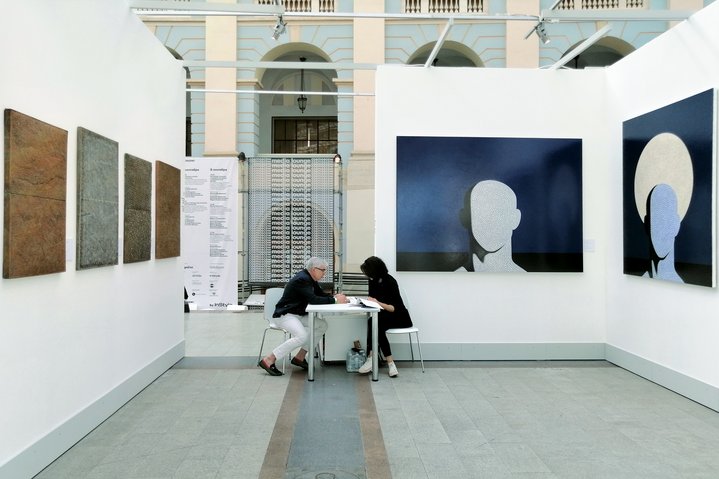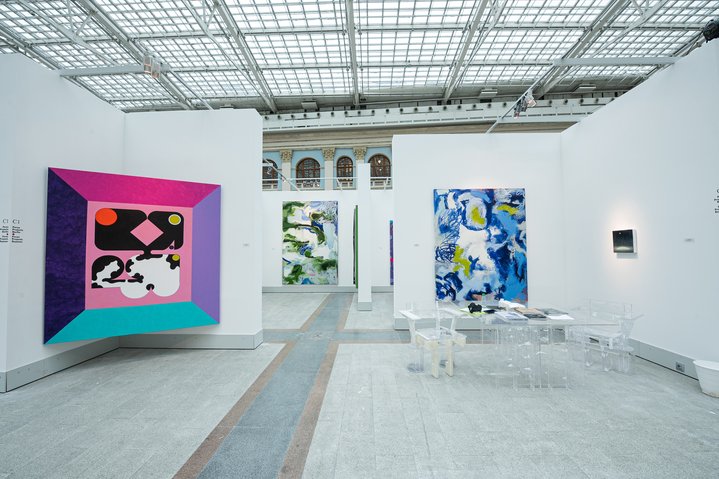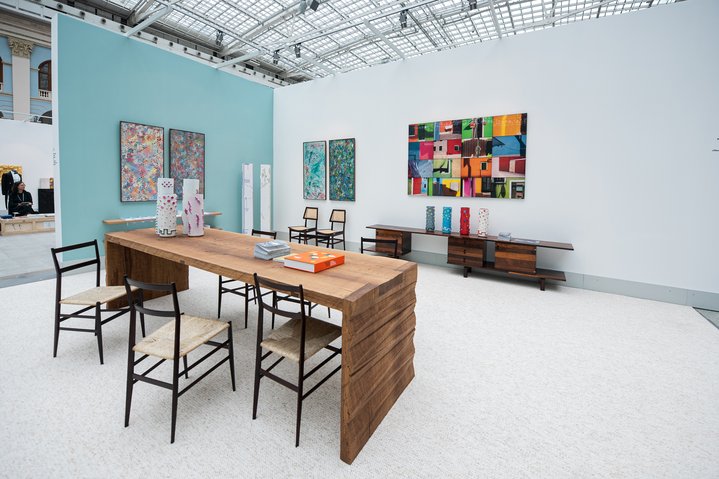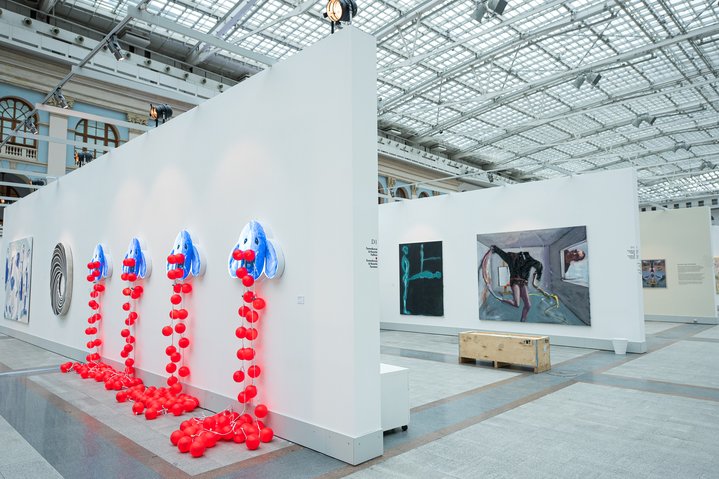Cosmoscow 2019: from politics to Pistoletto

Kris Lemsalu Baubo Dance. 2017–2018. Porcelain, textile, metal, leather, dimensions variable. Temnikova & Kasela Gallery
Russia’s biggest contemporary art fair, held in Moscow’s Gostiny Dvor art centre in early September, had some big names and a lot of action in store for art lovers.
A group of bizarrely clad young women were running around gallery booths on the opening night, setting off firecrackers and shouting orders to each other. Russia’s biggest contemporary art fair started off with a bang. The performance of the Vladivostok art group Dalnevostochnye Razluchnitsy (Far-Eastern Homewreckers) acquired ominous undertones at a time of political unrest in Moscow. The fair opened in the wake of the city’s local elections, which caused public outrage throughout the summer after opposition candidates were banned from standing for election on trumped-up pretexts. Several protest rallies were forcefully dispersed by police, while hundreds of protesters and sometimes unsuspecting passers-by (including one Russian Art Focus contributor) were detained. One of the protesters was sentenced to four years in prison on the day of the vernissage. Protests even reached the gallery booths. A six-metre long watercolour called “Picket,” by young Russian artist Ekaterina Muromtseva, greeted visitors from the outer wall of the very first booth, occupied by prestigious Moscow veterans XL gallery. The work depicted protesters holding blank sheets of paper, a powerful metaphor probably alluding to the arrest of a young political activist, Maksim Kondratyev, arrested on nearby Red Square in July for holding a blank sheet of paper. (He was released shortly thereafter without sentence.) Similar figures of protesters whose posters carried no slogans appeared in a series of drawings called “Untitled (Darkness)” by Evgeny Granilschikov (b. 1985), on sale at Artwin gallery’s booth.
Nevertheless, the general mood at the fair was one of entertainment rather than politics: no protests or prison sentences could destroy its signature festive mood. This year’s edition showed a new trend. The creative process was turned into a reality show for the public. During the vernissage, 22 artists of different generations, including stars such as Pavel Pepperstein (b.1966), Konstantin Zvezdochetov (b.1958) and Vladimir Dubossarsky (b.1964), painted a common artwork on a 150-metre long canvas in the form of a labyrinth. The project, entitled “Philosophy of the Common Cause,” was conceived by artist Georgy Ostretsov (b. 1967) and supported by the GUM Red Line gallery. (The canvas was later cut into pieces and sold at a charity auction. According to the participants, the project did not involve any financial remuneration for its creators). At the same time, young artist Maria Agureeva produced plastic objects moulded from her own body on the fair’s central plaza.
Another trend — bringing young artists to the booths instead of more established figures — was finally broken by a strong presence from foreign participants. Cosmoscow now has a limit of three artists per booth (a major improvement since previous years, when only two were allowed). Most Russian gallerists therefore try to promote new names at the fair, justly reasoning that collectors who are after big names such as Ilya Kabakov (1933), Erik Bulatov (b. 1933), Oscar Rabin (1928–2018), Vladimir Nemukhin (1925–2016), Viktor Pivovarov (b. 1937) or Pavel Pepperstein, already know where to find them. Foreign galleries, however, have no such concerns. The Giorgio Persano gallery from Turin brought a selection of mirror works by Michelangelo Pistoletto (b. 1933) from his new series Smartphone, at 500,000 euros apiece. (By comparison, the most expensive Russian artwork at the fair was Oleg Tselkov’s (b. 1934) enormous 1995 painting “Couple” at the Sovcom auction house’s booth, where it was on offer at 220,000 euros.) Vienna-based Georg Karl Fine Arts turned its booth into an interesting solo show of Bulgaria’s Nedko Solakov (b. 1957), while Paris' Frank Elbaz gallery brought an amazing selection of graphic works by the late Russian conceptual artist Dmitri Prigov (1940–2007), offered at 15,000–20,000 euros.
Among the few Russian galleries to value quality over novelty were Art4, with its series of early abstract graphics by Yuri Zlotnikov (b. 1930) dating from the 1960 to the 1970s (5,500 euros apiece), and Vellum, which offered paintings and graphics of Non-Conformist Anatoly Zverev (1931-1986) for 15,000-20,000 euros. Another highlight of Vellum’s booth were original linoleums by Vadim Sidur (1924-1986), at 8,000 euros each, which he used to produce his linoleum-block prints. Roza Azora brought a series of paintings by naive artist Pavel Leonov (1920-2011) at 6,000-16,000 euros apiece, while Ivan Yazykov’s (b. 1975) enormous drawing “Mending of All Things Single-Use,” approached by several eager collectors, was declared “not for sale” by the artist.
As always, the most interesting works at the fair were not easy to find. A project by the MishMash group, who were proclaimed Artists of the Year by the fair, was dispersed all over the place. Tiny boxes with inventive set-ups referring to the group’s earlier projects, came complete with 3D-printed figurines of the artists themselves and QR codes which led to the detailed description of each work. A trendy mix of reality and virtuality – with no strings (or price tags) attached!
Cosmoscow






